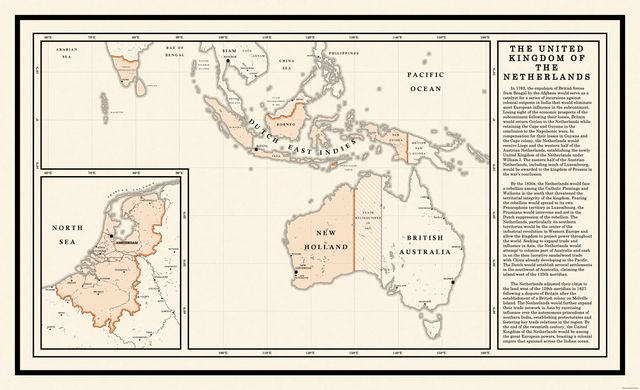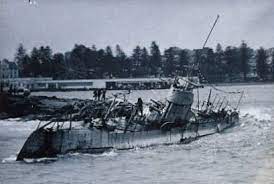The source of this is: Imaginary Maps! Where people can share maps they can make of alternate history, fantasy, sci-fi or as they state anything really! It is called Counterfactual History. We keep it in as a bit of fun
This how somebody imagining the United Kingdom of the Netherlands in the early 19th century
In 1782, the expulsion of British forces from Bengal by the Afghans would serve as a catalyst for a series of incursions against colonial outposts in India that would eliminate most European influence in the subcontinent. Losing sight of economic prospects of the subcontinent following their losses, Britain would return Ceylon to the Netherlands while retaining the Cape and Guyana in the conclusion to the Napoleonic wars. In compensation for their losses in Guyana and the Cape colony, the Netherlands would receive Liege and the western half of the Australian Netherlands, establishing the new United Kingdom of the Netherlands under William I. The eastern half of the Australian Netherlands, including much of Luxembourg, would be awarded to the kingdom of Prussia in the war’s conclusion.
By the 1830s, the Netherlands would face a rebellion among the Catholic Flemings and Wallooons in the south that threatened the territorial integrity of the kingdom. Fearing the rebellion would spread to its own Francophone territory in Luxembourg, the Prussians would intervene and aid in the Dutch suppression of the rebellion. The Netherlands, particularly its southern territories would be the center of the industrial revolution in Western Europe and allow the kingdom to project power throughout the world. Seeking to expand trade and influence in Asia, the Netherlands would attempt to colonize part of Australia and cash in on the then lucrative sandalwood trade with China already developing in the Pacific. The Dutch would establish several settlements in the southwest of Australia, claiming the island west of the 135th meridian.
The Netherlands adjusted their claim to the land west of the 129th meridian in 1827 following a dispute of Britain after the establishment of a British colony on Melville Island. The Netherlands would further expand their trade network in Asia by exercising influence over the autonomous princedoms of southern India, establishing protectorates and fostering key trade relations in the region. By the end of the twentieth century, the United Kingdom of the Netherlands would be among the great European powers, boasting a colonial empire than spanned across the Indian ocean.



